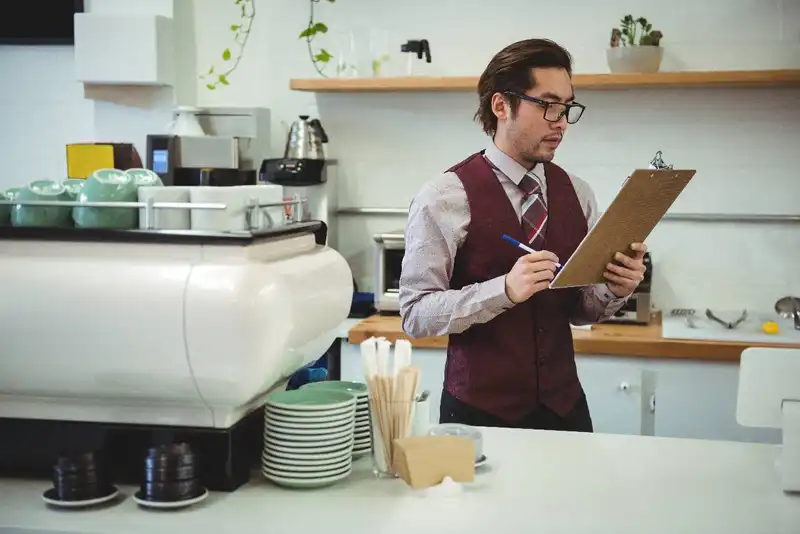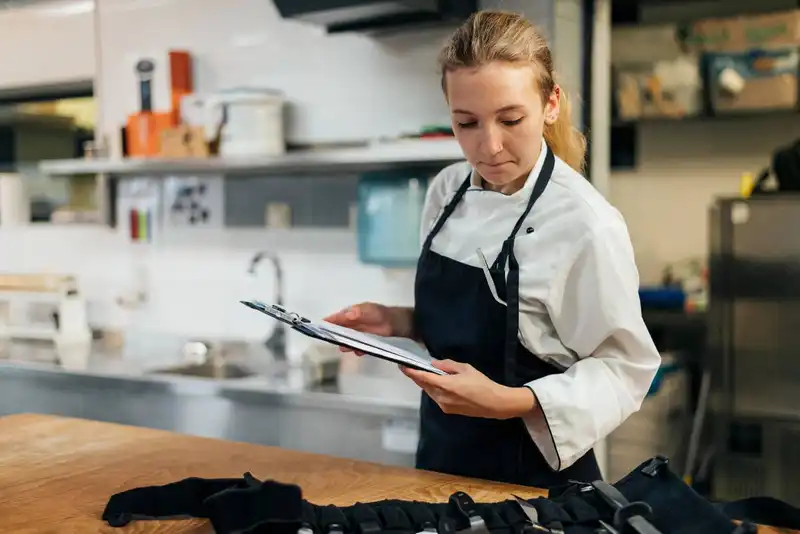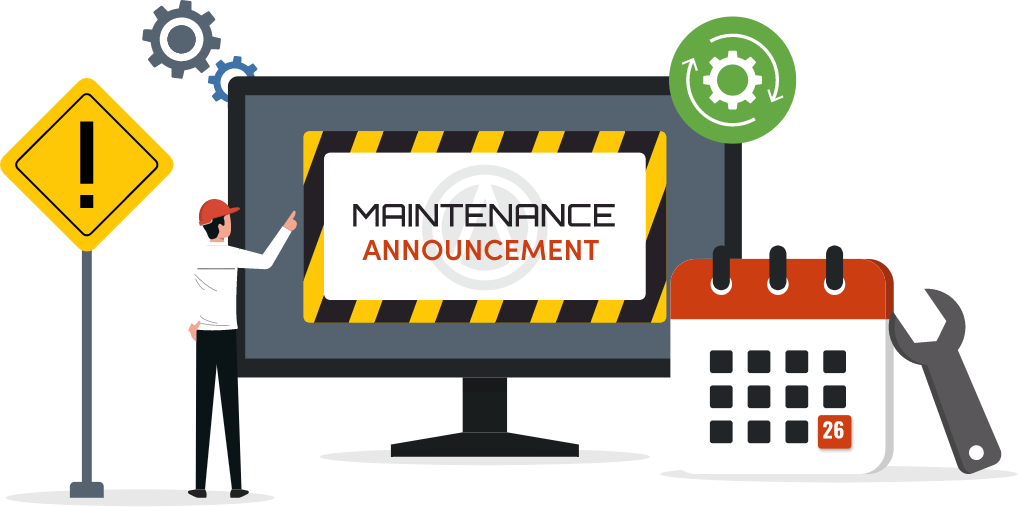What is food cost variance?
Food cost variance is the difference between a restaurant's theoretical food cost (based on recipes and sales) and its actual food cost (based on inventory and purchases). It reveals inefficiencies like waste, theft, over-portioning, or supplier price changes.
How to Calculate Food Cost Variance in Your Restaurant
Overview
As a restaurant owner, controlling costs is just as important as creating great food. One area that often slips under the radar - but has a direct impact on your bottom line - is food cost variance. This simple yet powerful metric shows the gap between what your food should have cost (based on recipes and sales) and what it actually cost (based on inventory and purchases).
Even small, unnoticed variances can add up over time, slowly eating into your profits without clear warning signs. Untracked waste, over-portioning, spoilage, or inconsistent supplier pricing can all cause these gaps - and unless you're calculating food cost variance regularly, you might never see where the problem lies.
The good news is that measuring food cost variance is not complicated. With a clear formula, the right data, and a little consistency, you can spot issues early, adjust operations, and protect your margins.
Breaking Down the Concept

Before you can calculate food cost variance, it's important to fully understand what it represents and why it matters for your restaurant's financial health. In simple terms, food cost variance is the difference between your theoretical (or ideal) food cost and your actual food cost. It tells you whether you are spending more (or less) than you should on ingredients based on your menu sales and portion sizes.
Theoretical Food Cost vs. Actual Food Cost
- Theoretical Food Cost is the "perfect world" scenario. It is calculated using your standardized recipes and the actual number of menu items sold during a specific period. For example, if you sell 100 burgers and each burger costs you $3 in ingredients, your theoretical food cost for burgers is $300.
- Actual Food Cost, on the other hand, reflects real-life kitchen performance. It's calculated from inventory data - the food you started with, what you purchased, and what remains at the end of the period. It accounts for everything that happened in your kitchen, including waste, spoilage, mistakes, theft, over-portioning, or unrecorded giveaways.
Why Does This Variance Occur?
Even in well-run kitchens, some level of food cost variance is inevitable. Common causes include -
1. Over-portioning - Staff serving more than the recipe specifies.
2. Spoilage or waste - Perishable ingredients expiring or being improperly stored.
3. Theft or loss - Missing inventory due to internal theft or supplier errors.
4. Price fluctuations - Unexpected supplier price increases not reflected in your costing sheets.
5. Recipe deviations - Staff not following exact recipes, leading to inconsistent ingredient use.
Why Should Restaurant Owners Care?
Ignoring food cost variance is risky. Even small discrepancies - just a few cents per dish - can add up to thousands of dollars over months. Regularly calculating and understanding your food cost variance ensures that you stay in control, protect your profit margins, and make operational decisions based on real data rather than assumptions.
Transform Your Restaurant Operations Now!
Effortless Inventory Tracking with Altametrics!
The Formula
Now that you understand what food cost variance is and why it matters, let's move on to the heart of the process- the formula itself. The good news is that this formula is straightforward and requires only a few key numbers that you likely already track in your restaurant operation.
The Basic Formula
Food Cost Variance = Actual Food Cost - Theoretical Food Cost
This formula measures the difference between the food you should have spent (theoretical cost) and what you actually spent (actual cost) over a given period.
1. Actual Food Cost Formula
Your Actual Food Cost is calculated like this -
Actual Food Cost = Beginning Inventory + Purchases - Ending Inventory
Beginning Inventory - The value of all food items in stock at the start of the period.
Purchases - The total amount spent on food during the period (from supplier invoices).
Ending Inventory - The value of all remaining food items at the end of the period.
For example -
If your beginning inventory was $5,000, you purchased $2,000 worth of food, and your ending inventory is $4,000, then -
Actual Food Cost= $5,000 + $2,000 - $4,000 = $3,000
2. Theoretical Food Cost Formula
Your Theoretical Food Cost depends on how many menu items you sold and the standardized cost to produce each dish. This is calculated using -
Theoretical Food Cost = E (Menu Item Sales Recipe Cost per Item)
For instance, if you sold 100 burgers and each burger's food cost is $3, the theoretical food cost for burgers is $300. Repeat this for every menu item sold and add the totals.
3. Food Cost Variance Calculation
Finally, apply these numbers to the variance formula -
Food Cost Variance = Actual Food Cost - Theoretical Food Cost
A small variance means you are in control. A large variance signals possible problems such as over-portioning, waste, or inaccurate recipe costing.
Step 1. Gather the Necessary Data
Before you can calculate your food cost variance, you need to gather accurate and reliable data. Many restaurant owners make the mistake of rushing this step, but it's the foundation for getting meaningful results. Without the right numbers, your variance calculation will be flawed, leading to poor decisions. So let's break down exactly what data you need and where to find it.
1. Beginning and Ending Inventory Values
Your inventory records tell you the value of the food you have in stock at both the start and end of the measurement period (typically a week or month). These values must be based on physical counts, not estimates.
- Use an inventory sheet listing every ingredient with quantities and unit costs.
- Be consistent - always count inventory the same way at the same time (e.g., Sunday night after closing).
2. Purchase Invoices
Next, you need the total amount you spent on food purchases during the period. This should come from actual supplier invoices, not assumptions or future orders.
- Include all food-related purchases only - do not include paper goods, cleaning supplies, or beverages unless you are tracking those separately.
- Double-check invoices for accuracy, especially if you've recently switched suppliers or experienced price changes.
3. Sales Data from Your POS System
You'll also need accurate sales data showing how many of each menu item was sold during the period.
- Your Point-of-Sale (POS) system should provide this report quickly.
- If you run specials or promotions, make sure these sales are included too.
4. Standardized Recipe Costs
Finally, you must know the exact cost to produce each menu item based on your recipes.
- This includes the portion size and cost of every ingredient.
- Your recipe costs should be updated whenever ingredient prices change to keep the theoretical cost accurate.
If any of these figures are incorrect or incomplete, your entire variance calculation will be off. Inaccurate inventory counts or missing purchase invoices will lead to unreliable results. Take your time during this step - solid data means clear, actionable insights later.
Once you have gathered all this information, you're ready to move on to calculating your actual food cost.
Step 2. Calculate Actual Food Cost

With all your data in hand, the next step is to calculate your Actual Food Cost - a critical number that shows how much you really spent on food over the chosen period. This figure reflects everything that happened in your kitchen, including waste, spoilage, theft, and portion control issues.
The Actual Food Cost Formula
Actual Food Cost = Beginning Inventory + Purchases - Ending Inventory
Let's break this down step-by-step to make it practical and clear -
1. Beginning Inventory
This is the total dollar value of your food stock at the start of the period. For example, if you began the month with $5,000 worth of food items in storage (meats, vegetables, dairy, dry goods, etc.), this is your beginning inventory value.
2. Purchases During the Period
Add the total value of all food purchases made during the period. This comes directly from supplier invoices. If you spent $2,000 on ingredients throughout the month, this number is added to your beginning inventory.
3. Ending Inventory
At the end of the period, you must count and value your remaining stock. Suppose your ending inventory is $4,000 - this is subtracted from the total.
Example Calculation -
Actual Food Cost = $5,000 + $2,000 - $4,000 = $3,000
So, your Actual Food Cost for the month is $3,000. This means that $3,000 worth of food product left your inventory - either served to customers, wasted, spoiled, stolen, or lost through error.
This number represents your true food spend for the period. It includes every possible factor that affects your kitchen's food usage - not just what you intended to use based on recipes and sales. If your Actual Food Cost seems unexpectedly high, it may be a warning sign of waste, theft, or operational inefficiency.
Being honest and thorough in this calculation is essential. Skipping counts or guessing values can result in a misleading food cost variance that doesn't reflect reality. Accuracy here lays the groundwork for reliable cost control and profit protection.
Once you have your Actual Food Cost calculated, the next step is determining your Theoretical Food Cost to complete the variance calculation.
Step 3. Calculate Theoretical Food Cost
After determining your Actual Food Cost, the next important step is to calculate your Theoretical Food Cost - the cost your restaurant should have incurred based on sales and standardized recipe costs. This figure represents what you would have spent in an ideal, perfectly controlled environment without waste, spoilage, or theft.
What is Theoretical Food Cost?
Theoretical food cost is based on the number of menu items sold and the precise cost of ingredients used in each dish according to your recipes. This number assumes that your kitchen followed recipes exactly, portions were correct, and there was no waste or loss.
How to Calculate Theoretical Food Cost -
Theoretical Food Cost = E (Number of Menu Items Sold x Standard Recipe Cost Per Item)
Here's how you gather this information -
1. Pull Sales Data from Your POS System
Your POS system will tell you how many of each menu item was sold during the period. This is essential because theoretical food cost depends directly on sales volume. Be sure the data includes all transactions - even discounted items and specials.
2. Reference Your Standardized Recipe Costs
Each dish on your menu should have a recipe cost sheet detailing the quantity and cost of every ingredient required to prepare the dish. For example-
- If your cheeseburger requires $3.00 worth of ingredients, this is your per-unit cost.
3. Multiply Sales Volume by Recipe Cost
For each menu item -
Units Sold x Cost Per Unit = Total Theoretical Cost for Item
Example -
- If you sold 100 cheeseburgers at $3.00 each -
100 x 3.00 = $300
Do this for every menu item sold, then sum all item totals to get your restaurant's total theoretical food cost for the period.
4. Total the Numbers
Add the totals from all menu items to get your final Theoretical Food Cost figure. This is the amount your food expenses should have been if everything ran perfectly according to plan.
This calculation gives you a "benchmark" to compare against your Actual Food Cost. If there is a large gap between your theoretical and actual costs, it signals an operational problem that needs attention - whether it's over-portioning, food waste, theft, or incorrect pricing.
Step 4. Find and Interpret Food Cost Variance
Now that you have both your Actual Food Cost and Theoretical Food Cost calculated, it's time to find your Food Cost Variance - the crucial number that reveals how well your kitchen is managing food costs.
The Variance Formula Recap
Food Cost Variance = Actual Food Cost - Theoretical Food Cost
This simple subtraction tells you how much more or less you spent compared to what you expected based on your sales and recipes.
What Does the Variance Number Mean?
Positive Variance (Actual > Theoretical)
A positive variance means you spent more on food than your recipes and sales predict. This is a red flag. It often points to issues like over-portioning, excessive waste, theft, or inaccuracies in inventory counts. For example, if your actual food cost was $3,000 but your theoretical cost was $2,800, your variance is +$200, indicating overspending.
Negative Variance (Actual < Theoretical)
A negative variance suggests you spent less than expected. While this might sound good, it could also signal problems like under-portioning (serving smaller meals than intended), inaccurate sales data, or incorrect recipe costs. Consistently negative variance may hurt customer satisfaction if portions shrink.
Zero or Near-Zero Variance
This is the ideal outcome and shows tight control over food costs. It means your kitchen closely follows recipes, your inventory tracking is accurate, and waste is minimized.
How to Use Variance to Improve Your Restaurant
Calculating variance isn't just about numbers - it's about taking action. When you identify a significant variance -
1. Investigate Causes - Review portion control, waste logs, theft prevention measures, and purchasing accuracy.
2. Update Recipe Costs - Make sure your recipe costing is current with supplier prices.
3. Train Staff - Reinforce the importance of following portion sizes and proper inventory management.
4. Monitor Regularly - Track variance weekly or monthly to spot trends early before they hurt profits.
Tracking food cost variance is about empowering you as a restaurant owner to make informed decisions based on data - not assigning blame. Small variances are normal, but monitoring this metric helps you maintain a healthier bottom line and a more efficient operation.
With this understanding, you're equipped to take the numbers and turn them into positive changes that protect your profit margins.
Making Food Cost Variance Work for You
Understanding and calculating food cost variance is more than just a bookkeeping task - it's a vital tool that empowers you to protect your restaurant's profitability and run your kitchen efficiently. While the numbers themselves might seem straightforward, their implications are powerful. Regularly tracking food cost variance allows you to spot issues before they become costly problems.
Why Consistency Matters
Consistency is key when it comes to food cost variance. Calculating this metric once won't provide enough insight. Instead, make it part of your routine - weekly or monthly, depending on your operation's size. Over time, you'll start to see patterns emerge. Is waste creeping up during busy periods? Are inventory counts slipping when new staff members start? These trends give you actionable insights that can save money and improve operations.
Small Adjustments, Big Impact
The goal is not perfection but progress. Even small improvements - like tightening portion control, improving storage practices, or updating recipe costs regularly - can reduce variance and increase your margins. Use the variance calculation to identify where your biggest challenges lie and focus your efforts there.
Data-Driven Decisions Over Guesswork
Restaurant ownership often involves juggling countless tasks and decisions. Having solid data on food cost variance shifts decision-making from guesswork to facts. This clarity helps you negotiate better with suppliers, plan menus more effectively, and train your team where it matters most.
Food cost variance isn't a number to fear - it's a number to respect. When you commit to measuring and understanding it, you gain control over a major expense category in your business. This knowledge not only safeguards your profits but also supports a more sustainable, efficient kitchen operation.
Start by gathering your data, use the formulas outlined in this guide, and make variance tracking a habit. Over time, this disciplined approach will help you run a smarter, more profitable restaurant.
Efficient Ordering at Your Fingertips
Experience Flawless Inventory Management with Altametrics









































































































































































































































































